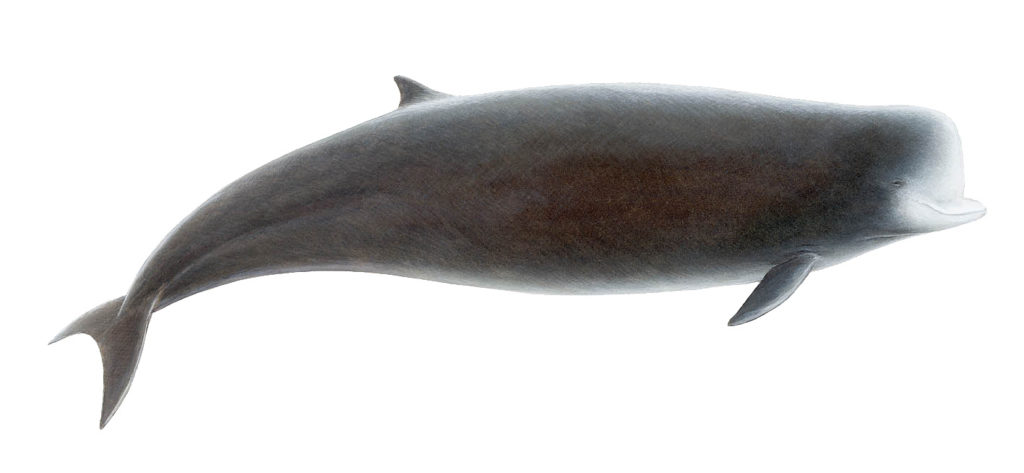![andarnefja_skyring[1]](https://whales.is/wp-content/uploads/2016/01/andarnefja_skyring1.jpg)
![Distribution in the North Atlantic andarnefja_utbreidsla[1]](https://whales.is/wp-content/uploads/2016/01/andarnefja_utbreidsla1.jpg)
Distribution in the North Atlantic
Length: 7-9,8 m (11,2 m?)
Weight: 3,5-7,5 t
World stock size: 50.000-100.000 animals
In the North Atlantic: Same
The northern bottlenose whale is rather rotund and varies in colour, ranging from almost black to grey or brownish in hue on the back and sides but with a lighter underside. The melon on an adult bull whale is high, short and bulbous and very light in colour, with a short but conspicuous beak. The dorsal fin, which is positioned slightly behind the middle of the back, is quite high, strong and sickle-shaped, curving towards the rear. The powerful flukes are usually without a median notch. Its flippers are fairly small and blunt. There are 2-4 long, forward slanting teeth at the front of the lower jaw, but these do not normally break through the gum except in the male of the species. The spout takes the form of a round column which reaches a height of about 1-2 metres; noticeable only ideal conditions. Its pace is generally gentle but it can travel at speed when necessary. It is an inquisitive creature and likes to approach boats which are lying adrift. A shallow dive can last from 5-10 minutes and a deep dive from 30-45 minutes, although the longest deep-dive on record for a bottlenose has been 2 hours. It is thought that they can dive to a depth of about 1,500 metres. The animal stays above the surface for about 10 minutes at a time and blows at 30-40 second intervals. Bottlenose whales usually confine themselves to small schools and can often be seen lobtailing and even breaching well out of the water.
Text, distribution map and photo: Sigurður Ægisson.
English translation: Frances Jane Milne McQueen and Rafn Kjartansson.
Drawing: Jón Baldur Hlíðberg.
For a more detailed information see the book Whales, by same men (Forlagið, 2010).




